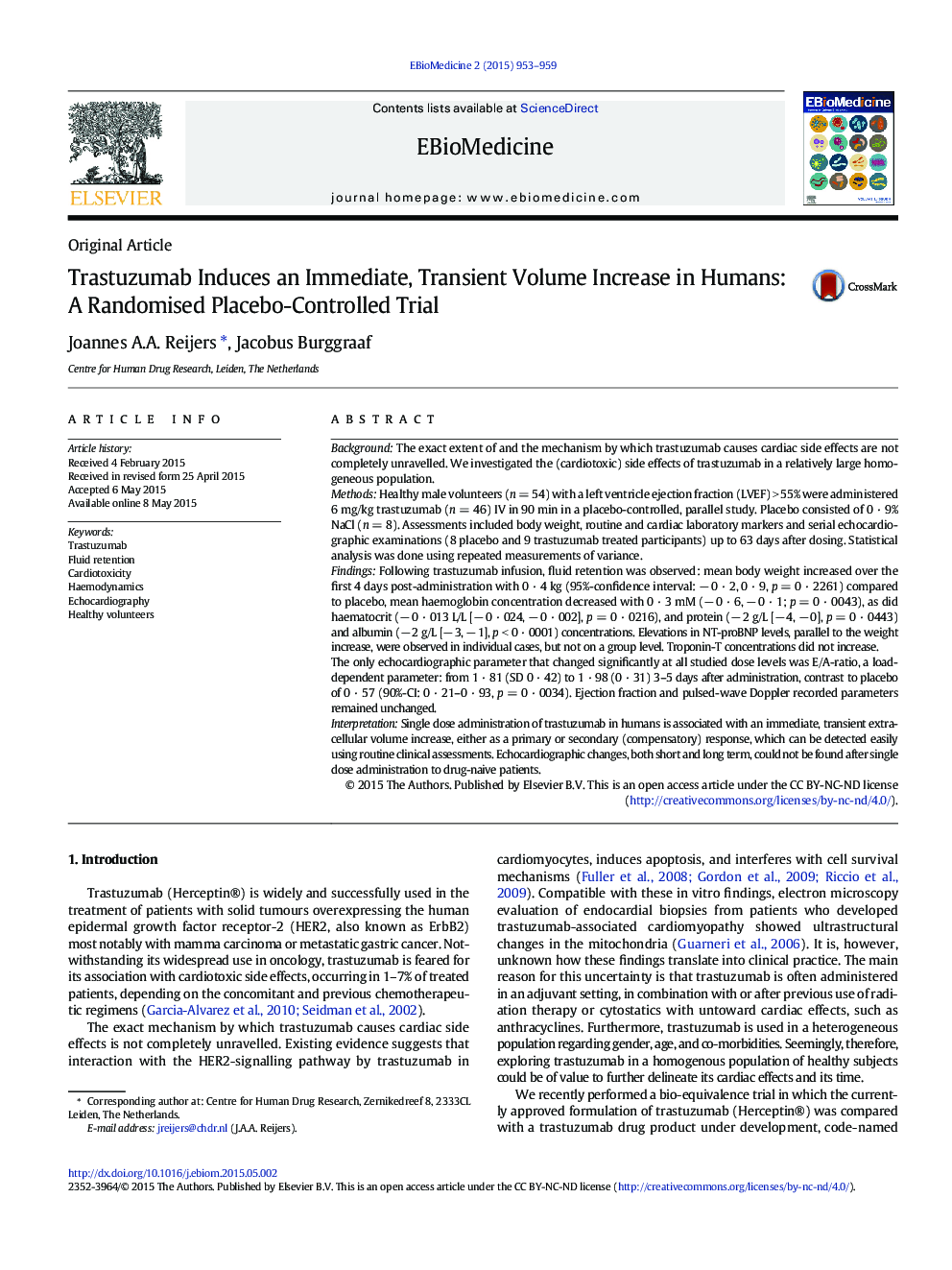| Article ID | Journal | Published Year | Pages | File Type |
|---|---|---|---|---|
| 2121130 | EBioMedicine | 2015 | 7 Pages |
•If and how trastuzumab causes cardiotoxicity remains unknown.•We investigated trastuzumab in a large cohort of healthy volunteers.•Trastuzumab is associated with an immediate, transient volume increase.•This response can be detected easily using routine clinical assessments.•Echocardiographic changes, both short and long term, were not found.
BackgroundThe exact extent of and the mechanism by which trastuzumab causes cardiac side effects are not completely unravelled. We investigated the (cardiotoxic) side effects of trastuzumab in a relatively large homogeneous population.MethodsHealthy male volunteers (n = 54) with a left ventricle ejection fraction (LVEF) > 55% were administered 6 mg/kg trastuzumab (n = 46) IV in 90 min in a placebo-controlled, parallel study. Placebo consisted of 0 · 9% NaCl (n = 8). Assessments included body weight, routine and cardiac laboratory markers and serial echocardiographic examinations (8 placebo and 9 trastuzumab treated participants) up to 63 days after dosing. Statistical analysis was done using repeated measurements of variance.FindingsFollowing trastuzumab infusion, fluid retention was observed: mean body weight increased over the first 4 days post-administration with 0 · 4 kg (95%-confidence interval: − 0 · 2, 0 · 9, p = 0 · 2261) compared to placebo, mean haemoglobin concentration decreased with 0 · 3 mM (− 0 · 6, − 0 · 1; p = 0 · 0043), as did haematocrit (− 0 · 013 L/L [− 0 · 024, − 0 · 002], p = 0 · 0216), and protein (− 2 g/L [− 4, − 0], p = 0 · 0443) and albumin (− 2 g/L [− 3, − 1], p < 0 · 0001) concentrations. Elevations in NT-proBNP levels, parallel to the weight increase, were observed in individual cases, but not on a group level. Troponin-T concentrations did not increase.The only echocardiographic parameter that changed significantly at all studied dose levels was E/A-ratio, a load-dependent parameter: from 1 · 81 (SD 0 · 42) to 1 · 98 (0 · 31) 3–5 days after administration, contrast to placebo of 0 · 57 (90%-CI: 0 · 21–0 · 93, p = 0 · 0034). Ejection fraction and pulsed-wave Doppler recorded parameters remained unchanged.InterpretationSingle dose administration of trastuzumab in humans is associated with an immediate, transient extracellular volume increase, either as a primary or secondary (compensatory) response, which can be detected easily using routine clinical assessments. Echocardiographic changes, both short and long term, could not be found after single dose administration to drug-naive patients.
